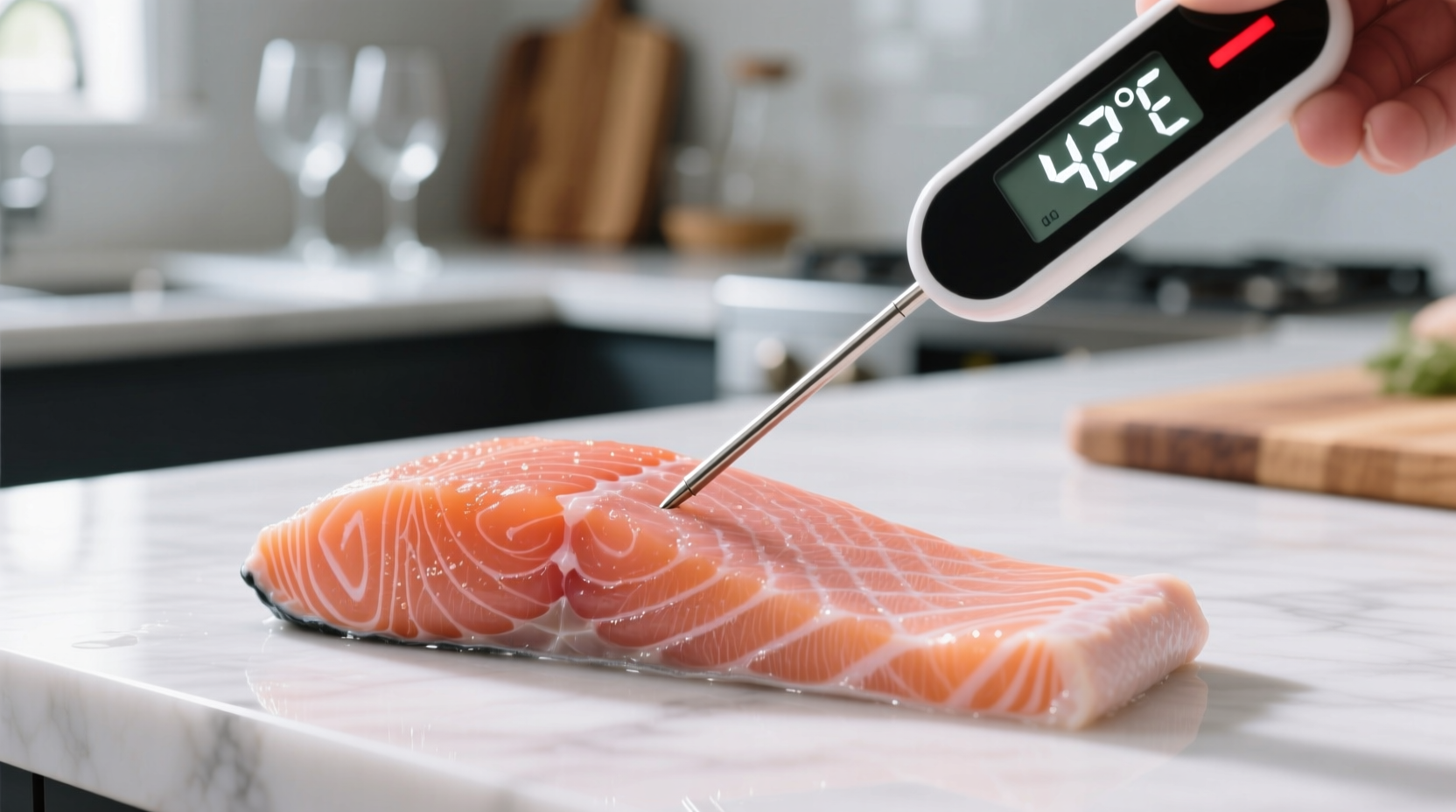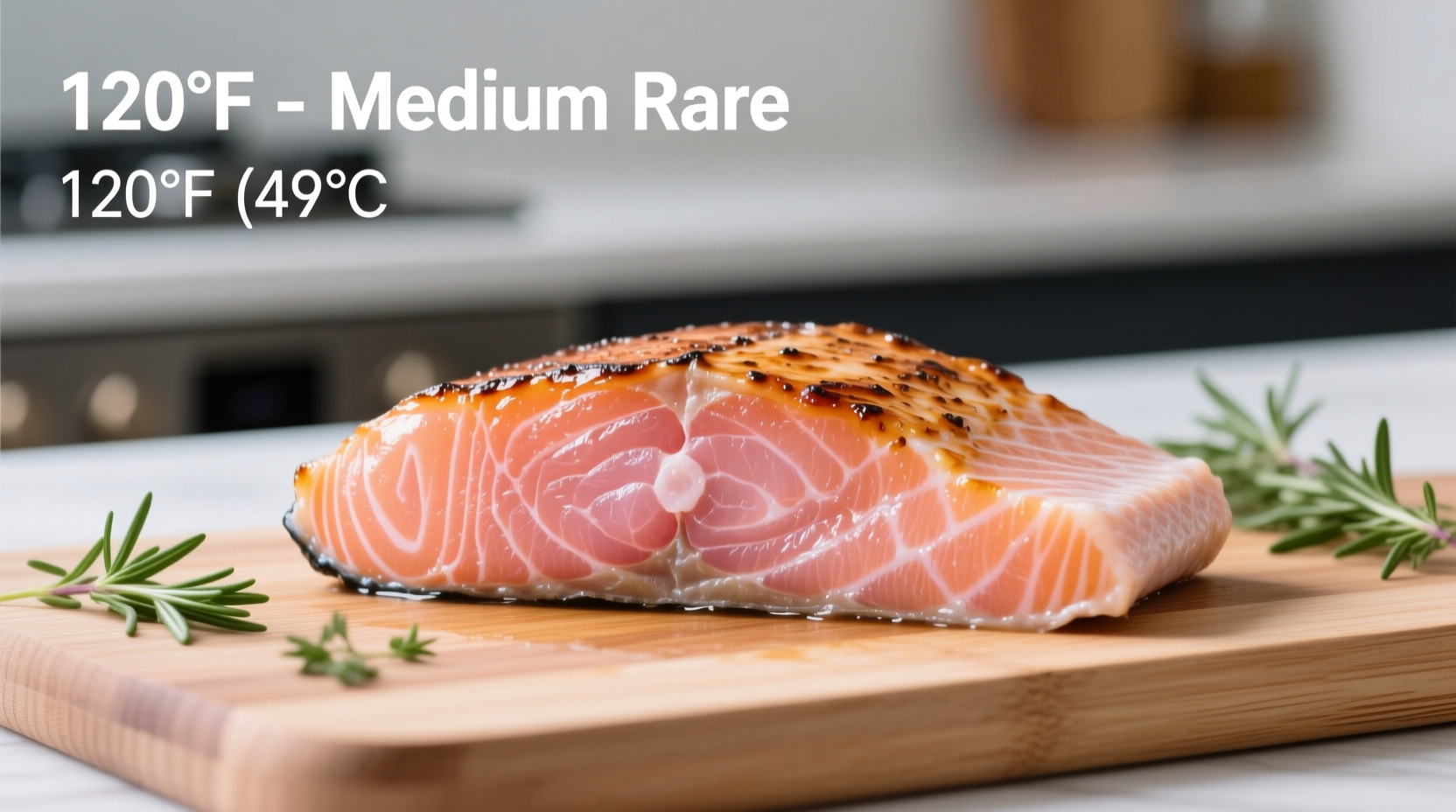Why Temperature Precision Matters for Perfect Salmon
Getting salmon temperature right transforms your cooking from risky to restaurant-quality. Undercooked salmon risks Salmonella and Vibrio bacteria, while overcooked salmon becomes dry and chalky. The sweet spot balances food safety with that coveted buttery texture chefs prize. Let's break down exactly what temperature salmon should reach for your perfect meal.

Official Guidelines vs. Culinary Reality: The Temperature Spectrum
While government agencies prioritize safety, professional kitchens optimize for quality. Here's how recommendations compare:
| Doneness Level | Internal Temperature | Texture & Appearance | Recommended For |
|---|---|---|---|
| Medium-Rare | 125°F–130°F (52°C–54°C) | Translucent center, flakes slightly | Healthy adults seeking optimal texture |
| Medium | 130°F–135°F (54°C–57°C) | Mostly opaque, moist flakes | Most home cooks (ideal balance) |
| USDA Safe Minimum | 145°F (63°C) | Fully opaque, firm texture | Vulnerable populations* |
*Per FDA Food Code Section 3-401.11, this higher temperature is mandatory for elderly, pregnant, or immunocompromised individuals. For healthy adults, the lower range is scientifically safe due to salmon's low parasite risk when properly handled.
Your Step-by-Step Temperature Guide
1. Selecting & Calibrating Your Thermometer
Instant-read thermometers are essential—no guessing games. Test accuracy by inserting into ice water (should read 32°F/0°C) or boiling water (212°F/100°C at sea level). For thick fillets, insert horizontally into the thickest part, avoiding bones. Pro tip: Check temperature 5°F below your target—salmon rises 5°–10°F while resting.
2. Adjusting for Cooking Methods
- Pan-searing: Pull at 120°F (49°C) for medium-rare; the hot pan creates significant carryover
- Oven-roasting: Remove at 125°F (52°C)—gentler heat means less temperature rise
- Grilling: Check early; high heat accelerates cooking. Target 122°F (50°C) for medium
3. The Critical Resting Phase
Never skip resting! Transfer salmon to a warm plate, tent loosely with foil, and wait 5 minutes. This allows residual heat to distribute evenly (carryover cooking) while juices reabsorb. Skipping this step causes moisture loss when cutting—the #1 reason home cooks end up with dry salmon.
Avoid These Common Temperature Mistakes
- Mistake: Relying on color/flaking alone
- Solution: Visual cues fail with frozen/thawed salmon. Always verify with a thermometer—USDA confirms visual indicators are unreliable
- Mistake: Measuring near the skin
- Solution: Insert probe horizontally through the side to center of the thickest section
- Mistake: Overcrowding the pan
- Solution: Cook in batches; crowded pans drop temperature, causing uneven cooking
When to Trust Lower Temperatures (and When Not To)
While 125°F–130°F creates perfect medium-rare salmon, adjust based on context:
- Use 145°F (63°C) when: Cooking for pregnant women, young children, or immunocompromised individuals per FDA guidelines
- Stick to 135°F (57°C) max when: Using previously frozen salmon (freezing reduces parasite risk but affects texture)
- Never go below 120°F (49°C): Raw salmon risks Anisakis parasites even in sushi-grade fish
Remember: Quality starts before cooking. Purchase salmon with firm flesh and bright color from reputable sources. The FDA's Fish and Fishery Products Hazards Guide details safe handling practices that complement proper cooking temperatures.
Final Temperature Checkpoints
Before serving, verify these signs align with your thermometer reading:
- Medium-rare: Center remains slightly translucent; flakes gently with fork pressure
- Medium: Uniformly opaque but still moist; separates into clean flakes
- Overcooked: Dry, chalky texture; crumbles instead of flaking











 浙公网安备
33010002000092号
浙公网安备
33010002000092号 浙B2-20120091-4
浙B2-20120091-4